The case for using the Alexander Partners’ 4 Ring Talent Model
Finding and retaining talent is an increasingly important corporate objective. Because employee turnover can be a major drain on any company’s resources, picking the right people and effective talent management will boost performance across all areas of an organisation. Devising a talent management plan that not only brings in the best people for the job but quickly and effectively acclimates them to the corporate culture becomes a must for competitiveness. Consequently, the most competitive companies invest real time, finance and energy into talent recruitment and retention.
This article reproduces the discussion between Dr Ambroz Neil (AN), the Managing Principal Consultant of Alexander Partners, and an old colleague Dr John Hobart (JH). It is both frank and revealing, homing in on the principal talent management challenges that we face today, and ideas on how to be at the front of the curve in solving them.
The Cost of Talent
JH: There is increasing talk about the importance of leadership, more specifically identifying and developing talented young men and women who have leadership potential.
AN: Yes there is, simply because strong leadership helps an organisation outperform the competition and to retain talented employees; a circular argument. Progressive organisations accept that they need to develop a steady pipeline of talent ready to provide leadership. I am however surprised that less than one third of EU companies have enough qualified successors. If we accept that just over 50% of companies have a formal process to identify talent, a shocking 70% are at most moderately satisfied with the effectiveness of their internal talent programme. Practitioners only give themselves a 50% rating at identifying talent.
JH: Really, as low as that!
AN: Let us just say that political and personal bias routinely get in the way.
JH: An interesting set of statistics! So it is not entirely an external problem?
AN: Unfortunately, no. Even after identifying and recruiting talent, talent management and development is too often wanting, leading to frustration and stalled careers this in turn too often leads to the individual leaving.
JH: And the financial cost?
AN: Depending on which study you look at, losing a talented employee can cost 3.5 times their annual salary. By no means an insignificant amount. Talent management programmes should be designed to develop individuals with leadership potential, the emphasis is on ‘potential’ and not solely ‘present day performance’. Ideally, organisations should seek individuals with both.
Promoting the wrong person causes problems, period. Good leadership result in positively engaged employees who are energised and enthusiastic. Bad leadership results in alienation and demoralisation. There is a close link between positively engaged employees and organisations showing higher returns on assets and profitability.
JH: Where does a progressive organisation go from here?
AN: They should look to mentor their graduates and junior managers. Provide them with the mentoring that senior managers receive. If an organisation gets this right they will develop better leaders.
Organisations will benefit with an increase in rate of employee retention of high flying graduates. Let’s face it, these high flyers are determined and will progress wherever they work. Too often they leave an organisation after 12 to 18 months because they realise they have chosen the wrong career or, the organisation is not progressing them fast enough. It could also be that they are not getting the support, exposure and therefore experience they need. They are unhappy, become demotivated and because they are high flyers moving to another organisation is often not too difficult. Talent really do not like to coast. When they do they invariably underperform. A simple question to organisations, why go through the time and expense of recruiting talent to only watch then collect dust! It is like buying the top of the range Lotus Esprit only to drive it 400m to and from the corner shop.
JH: Unless it’s just for show? But yes, I get the point.
AN: Although organisations say they provide internal mentoring, one scenario always brings a wry smile to senior management. Too many of them don’t want to accept or acknowledge that a recent graduate or junior manager is far less willing to open up to their internal mentor when they have an issue with their line manager. Why? Because it is highly likely that the mentor and line manager are colleagues. This is real. This is what our clients experience. This is even before we consider the effectiveness of the internal mentoring programme; busy managers not having the experience or time to provide regular support to talented junior managers and graduates. Can management honestly say that they can routinely allocate weekly sessions to mentor talent? These challenges are addressed by using external mentors like us.

Profiling
AN: Let’s take a few steps back and look at how we support and develop talent. One element of our approach is the depth to which we profile candidates; graduates, junior managers. We take them through several assessments. We do not only evaluate numeracy and reasoning but also decision making, propensity to lead, reaction to criticism. We then translate this wealth of data into those principal characteristics that organisations repeatedly and consistently say they want in their recruits, typically emotional intelligence, ability to communicate, to solve problems, to lead. Mapping the data in this way produces an in-depth profile of the individual.
The real uniqueness in our approach is how we take all the data relating to the individual talent and superimpose it against an extensive basket of research findings from the Americas, Australasia and across Europe, of what organisations are looking for in their talent recruits. Whilst not rocket science, our treatment is pretty neat and effective at profiling the individual and target profiling what organisations want.
JH: OK. Give me an example.
AN: The ability to communication, in the widest sense, is a target characteristic. We know that it is influenced by assertiveness, empathy, ability to manage stress. Also, the communication cocktail is not made from an equal mix of these different ingredience. Simply put, our treatment profiles talent and translates it into those key characteristics that organisations say they want and need.
JH: Do you refine those profiles for different organisations and can they be redefined as the talent progresses through say, a graduate programme, or as a junior manager becomes more senior? I expect there would be an emphasis on technical skills and ability to work as a team during the formative period with, emotional intelligence supported by a technical skill, such as financial management, becoming more important with seniority. As the requirements of the role evolves would this be reflected in the individuals’ profiles?
AN: What you have said is exactly within the scope of our profiling. As part of the assessment process, and when looking at the data we collect, we have the facility to adjust the rating assigned to the different characteristics. Adjustments also made to reflect the industry and organisation.
JH: OK, yes
AN: Our approach to profiling is flexible and practical. The information we provide to organisations and talented individuals is real and extremely useful. We create a profile of the talented individual. We also create a target talent profile (TTP) specific to an organisation, industry and the management level of interest. We then compare the individual’s profile with the TTP, identifying clear gaps.
When a mentee tells us that they want to apply for, say a role with Google we are able to identify areas where they will need to strengthen. Therefore, before making an application we work with them to bridge the skills, the competence, the motivational gaps. If nothing else, our mentee is made aware of what is needed to increase the likelihood of success; effectively we increase their career capital.
JH: I can see how that works.
AN: Similarly, if a corporate client is looking for exceptional talent we can raise the bar by raising and narrowing the TTP range.
JH: So organisations also benefit?
AN: Yes. We can map (define) the talent profile that an organisation wants. Our approach reduces subjectivity, the selector bias towards selecting the near perfect younger self. Let’s be realistic, no system is totally objective and in truth the use of ones’ infallible ‘gut feeling’ should not be entirely eradicated.
JH: Make the process empirical!
AN: Empirical but not impersonal, yes. A significant benefit to our mentees is that we are able to better position them. One graduate after another is convinced that they will make the perfect sales person or banker. Too often the data from our in-depth profiling begs to differ. It is not that they cannot sell, but all roads might lead to them being better at project management, or in operations. One particular mentee springs to mind. He tried sales. It totally frustrated him. It wasn’t what he thought it would be. He didn’t enjoy the pressure that a sales role brings. He came to the realisation that sales pressure is different from the pressure experienced by project managers, which in turn is different to that experienced by, say a nurse. Our approach to mentoring means that our mentees do more and achieve more because they carve out better suited careers.
JH: Yes, it makes sense.
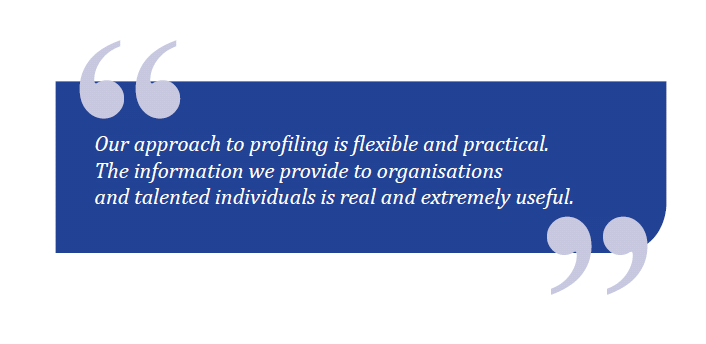
Specific Characteristics
AN: We incorporate the classic Jahari-window approach to self-assessment.
JH: OK, what they think about themselves?
AN: Yes. Consider the spectrum between confidence and ability. Problems arise when confidence far exceeds ability and when a capable person has very little confidence.
JH: I know. It’s normally pretty obvious. Any reasonable interviewer has an appreciation of the interplay between the two.
AN: We help our mentees understand and address the challenges that result from this mis-match between confidence and ability. This is an example of one of our many intangible deliverables.
Consider also being able to determine the principal role that a talent would naturally lean towards in a team. These are examples of important metrics that are considered when organisations search for talent and when talent looks for new opportunities. Typically, as an engineer wanting to work in the nuclear industry, do you pitch yourself as a team player, a perfectionist, a facilitator, a networker? Notwithstanding the fact that we all instinctively adjust our behaviour depending on the mix of characters in our group, we each have a natural preference.
Thinking back, I once inherited a team of four critics. I am convinced that senior management either wanted to see if I could make bricks without straw or perhaps they were simply having a laugh at my expense. Needless-to-say it was a frustrating couple of months – getting the team to agree on anything was a challenge.
JH: And what about a team of experts? In addition to being intelligent they tend to be single minded.
AN: A team solely made up of experts goes nowhere very fast. It’s as simple as that. Leadership potential is another important metric. We know that some people long to lead whilst others have leadership thrusted upon them.
JH: The role is thrusted upon them? The reluctant leader.
AN: That’s right. If you are a strong visionary or have irresistible drive, the culture within your team will reflect this whether or not you are the designated leader. You will shine through.
JH: Some are born to graze, some are flyers and some harness.
AN: Yes, that’s right. Someone who preferentially fosters a democratic approach, will encourage team members to have their say. Classic “situational leadership” thinking would suggest that this leader would be far less effective when an immediate decision is needed.
Reflecting on my time at Unilever, during a period when much change was a foot, the head of research, Port Sunlight, was a flamboyant creative leader. After he drove through the principal changes a different leadership style was needed – one that provided a moment of pause following the reverberations of a change agent. What is needed are individuals who can naturally change their style dependant (contingent) on the situation; Fred Edward Fiedlers contingency theory of leadership. Whilst talented individuals with this ability are of value, how many organisations actively look to identify this characteristic in their recruits?
JH: I can see that. Yes. So, what you have said so far is that your novel approach uses a series of sub-metrics to identify talented individuals; their potential strengths and weaknesses. You support their development and help your corporate clients maximise their ROI.
AN: Succinctly put, yes.
JH: And that might be as a candidate, somebody in a junior position or a development position, as I would call it, who wants to grow within the organisation. The person can be completing their A levels, at university, a graduate or working; from 18 all the way through to 30ish.
AN: Yes, precisely. But part of the uniqueness is that we map and strategically link the development of talent and the requirements of organisations, presenting a win-win scenario. A positive sum game.
JH: I can see that.
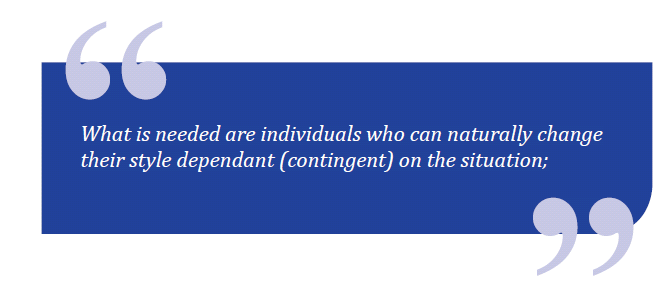
Mentoring and Coaching
AN: We provide the necessary mentoring and coaching to facilitate talent development appropriate to the individual and their organisation. We bridge the gaps.
JH: Yes, with most sub-metric tests the organisation is presented with an arbitrary scale, say red, amber, green to indicate degrees of success. There is little emphasis on nurturing.
AN: An arbitrary scale is not really useful to the individual or the organisation.
JH: There are also psychometric tests which have no development rules. They are expensive when used at the senior management level, almost a staple diet when recruiting at the graduate level. In both cases, they do not provide an insight into how to develop the individual.
AN: Indeed. Other than looking at how individuals are motivated, it is important to know how they are likely to react to criticism and whether they are inclined to make tactical or strategic decisions.
JH: All very useful information.
AN: Organisations and mentors need to have some insight into these characteristics. They help to determine how best to manage and support the talent. Surely it would be a mistake to place someone who is too strategic in an operational role, such as plant management or back office within a bank, where the focus is on the here and now.
JH: Yes, it’s short term tactics. The emphasis is to deliver on the day.
AN: Exactly. Likewise, what drives a person? Is it the prospects of gaining a horde of material things, status or just the challenge? There is no point wanting to work in sales for a company like Mars if you are not truly sales driven. We all know that organisations need employees with different skill sets, competencies and motivations. Our approach is to identify and manage those different metrics, and so help individuals and organisations alike to prosper – a symbiotic relationship.
We routinely ask our mentees a set of direct questions: are you in the right place, what things should you be doing to develop into your next move, how do these plans add value to your employer? Likewise, we ask organisations whether they have recruited the right talent, are they developing their talent and, is their talent management programme directly linked to the strategic development of their organisation?

Our 4 Ring Talent Model
AN: To directly support organisations and individual talent we have developed a 4 Ring Talent Model that integrates six philosophies; talent profiling, corporate target talent profiling (TTP), career capital (Cal Newport, 2012), personal branding (Peters, 1999), flow (Mihaly Csikszentmihalyi, 1990), and the learning process (Balwin & Ford – 1988).
JH: At first glance, it seems like an interesting mix.
AN: I have already discussed talent profiling and TTP. Let’s look at career capital. This captures anything that has a positive impact on a career; gaining a degree, significant sporting or musical achievements. It includes networking and wearing the most prestigious university and employer badge. Basically, any and everything that gives you valued transferable skills and encourages others to infer that you are ‘top draw’.
Career capital is especially important to build when young and opportunities are plenty. Doing something dynamic such as cycling from Land’s End to John O’Groats, gaining a seat on university challenge, maybe representing England in one of the many university sport teams. The flood of undergrads going to India and parts of Africa to help communities build a school is all about adding to their career capital and of course doing a good deed in the process. Yes, I am being somewhat unfair by suggesting less than altruistic motives when undergraduates support needed communities!
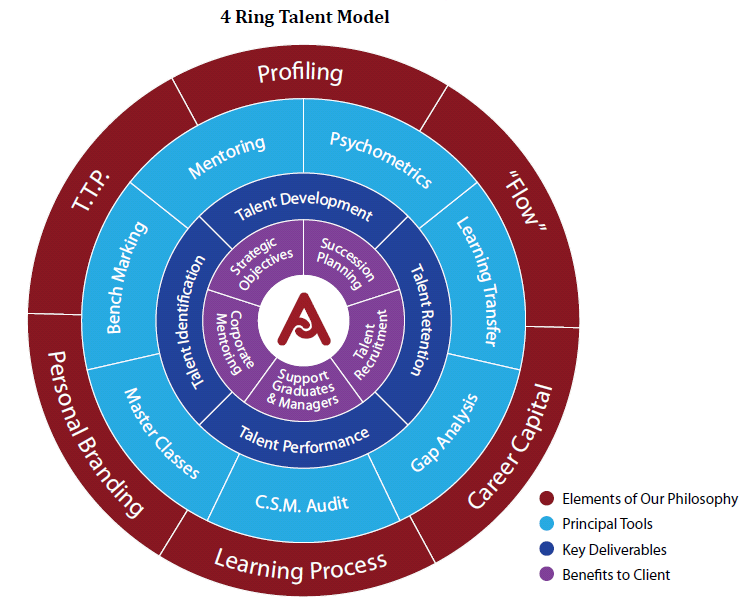
AN: As career capital grows so does career flexibility. Therefore, a rule of thumb is to build career capital especially if you are not sure about your preferred career path.
JH: OK, yes
AN: There is an obvious link here with the idea of personal branding, where the challenge is to view yourself as a brand. This is not a new idea. Some historians argue that both Alexander the Great and Julia Caesar were both excellent self-publicists. I believe that Goffman (1959) hit the nail on the head when he examined the inter-play when people meet. Simply put, they each try to influence the impression that the other has of them whilst, simultaneously building an image of the other person; dramaturgy – an awkward sounding term. Personal branding (Peters, 1999) is far more appealing.
JH: True.
AN: When we buy into the idea of personal branding we combine the ideas of self-improvement and self-packaging.
We seek answers to questions such as, ‘what is your brand?’ ‘What is the value of your brand? Are you a Nokia, are you Apple, are you a Pound Shop or a Marks & Spencer? We are not advocating that one brand is better than the other. We promote ‘difference not deficit.’ Our central message is simple, to know your brand is to know your market. Remember, brands evolve; the McDonalds brand of the 1940’s is vastly different to what it is today.
Too often I have to remind graduates that if they align their personal brand with that of their employer it can help their progress into senior management. The down side is that as they do this they become normalised and increasingly lose the ability to view organisational challenges differently.
JH: Yes, I can see how the two are closely linked. So what about the other philosophies, how do they fit in?
AN: For all those ex-sports stars, the concept of ‘flow’ will hit home. Sometimes when I go to play squash I am not up for it and on other occasions I am buzzing. In either case, sometimes I play like a ‘chump’, as if I only just learnt the game. On other occasions, unfortunately not too often, I can do no wrong. I am in the zone. It is this ‘in the zone’ state of mind or ‘flow’, as coined by Mihaly (1990), that we develop in our mentees. Lucozade used this concept in an advertising campaign – simply called ‘Find your flow’.
We know that things such as balancing the difficulty of a challenge with a persons’ ability supports the state of ‘flow’; a mis-match leads to either boredom or anxiety. Remember, talent walks when bored, when they feel as if they are treading water or unsupported. A well-tuned talent development programme should therefore reflect the fact that ‘flow’ is dynamic and not static.
JH: Yes, so true.

Talent Management
JH: Once an organisation recruits a talented individual, how should they be managed?
AN: Well, they are not the finished article and so should be mentored. When we mentor we focus on those principal drivers that influence the transfer of learning of targeted skills and competencies; specifically learning, retention, generalisation and maintenance. Also, the characteristics of the talented individual, how the programme is designed and the corporate environment form a useful platform upon which to assess and develop an organisations’ talent development programme (Balwin & Ford, 1988). The emphasis is very much on the individuals’ aptitude to learn and their confidence to put into practice, or transfer, what they have learnt.
When asked to examine the strategic basis that underpin a development programme I start from the premise that talented individuals tend to be good at learning from their mistakes.
Therefore, a programme that adopts an error management approach, coupled with the idea of far transfer of learning is likely to be more effective than one based on error avoidance and near transfer.
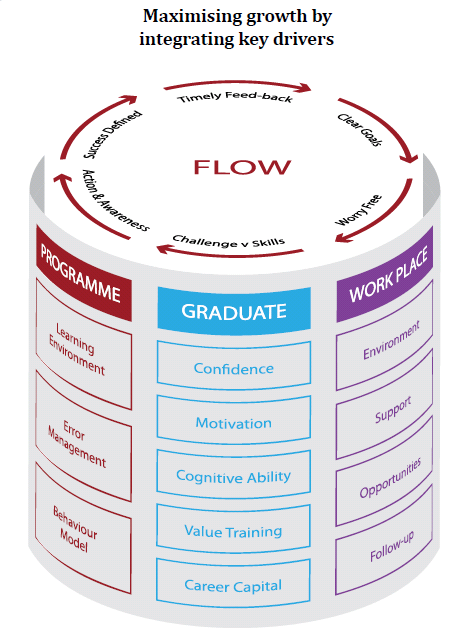
JH: Far transfer of learning?
AN: Yes, adapting what has been learnt to a situation that is far removed from the circumstances that provided the learning experience.
JH: So the effectiveness of a learning programme is reflected in the learners ability to apply what they have learnt in different situations?
AN: Yes. But, unfortunately this is easily undermined when senior management is happy to simply tick the box that says ‘we have a talent management programme’, rather than ensuring it is well designed and implemented with real gusto.
We help organisations focus on the effective strategic elements that offer a good ROI, developing and retaining the talent that is travelling through the senior management pipeline, whether or not it is an official succession plan.
JH: Yes
AN: I remember talking to a senior manager at Philips Electronics who recalled one of the biggest failures in his career. Skipping over the detail, probably due to embarrassment, he repeated the one important question that his unofficial mentor asked him, “what have you learnt?” Similarly, after my nine-year-old son stopped crying because he lost his first squash tournament, I asked him a similar question, “how does it feel?” Whilst these questions are difficult to answer, the overall advice is pretty standard – learn from your mistakes, work harder and work smarter.
JH: Ouch. You give them the tools and the training. Yes, I can see that.
AN: We prepared one particular mentee in advance of each of his six 2 month placements on his graduate scheme. He is now earmarked to go places. So you can imagine my surprise when he declared his desire to resign and find another graduate programme. Apparently two senior managers gave him what they believed was a pep talk about how well he is doing.
JH: No pressure
AN: Oh yes, no pressure. It was clear that he had the ‘wobbles’
JH: Yes, it happens to us all at some stage.
AN: Everyone, yes. So instead of continuing to raise his game he wanted to step back into the comfort of another graduate programme.
JH: Well, it’s a safer environment. This does beg the question of career development.
4 S Matrix
AN: We use a matrix to represent a simple way to visualise career (talent) development. It has two controlling strands, career capital and competency, strengths and motivation (C.S.M). Each of the four quadrants (seedling, specialism, stature and summit) represent a career stage, with movement from one to another through adopting a career development strategy.
Career strategies focus on specialising in an area such as finance, law, technology, management or developing a stellar reputation. In reality, these two are inexplicably bound. Do you earn a maths degree at Oxbridge or at a university that languishes significantly lower in the academic hierarchy? The former is interpreted as greater stature and mastery in maths (specialism). Similarly, do you take that job with an employer with a global standing and first-class reputation, such as BP or Johnson & Johnson, or one that only has a local presence? Choosing Oxbridge and BP implies quality and excellence which adds to career capital (reputation). A recruiter once told me that they have never been criticised by a client for putting forward an Oxbridge graduate.
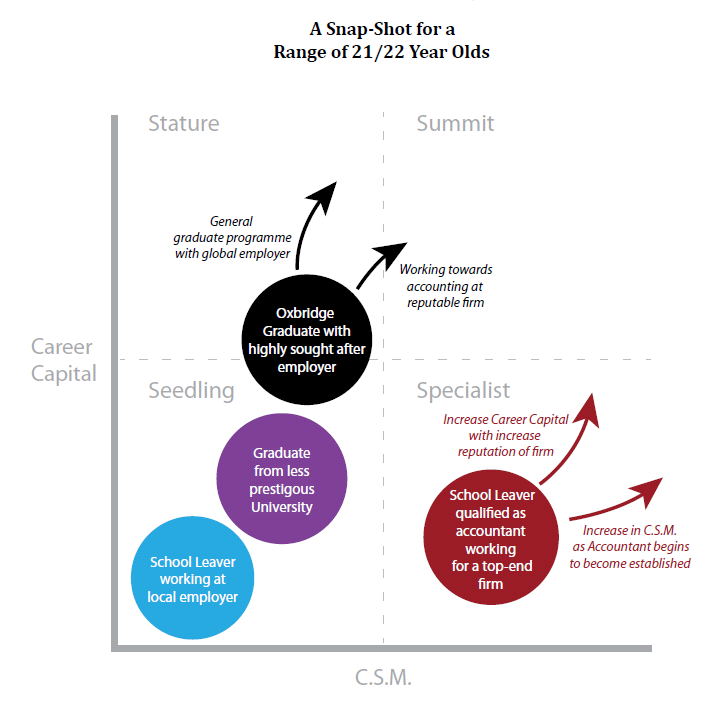
AN: To maintain mastery many professions such as accountancy require ongoing or periodic training and education (continuous professional development). Today’s expertise might have less value tomorrow, impacting negatively on mastery (specialisation) and career capital. Let’s remember, career capital can take a hit because of frequent redundancy that is totally outside your control. Reaching the summit is one thing, but staying there is yet another.
We use strategic elements such as additional studies and lateral moves to acquire much-needed skills. Sometimes, rarely but sometimes, a backward step can help a career. Invariably this occurs when a key competency is needed. We help our mentees to use positioning strategies to advance their career. I am always intrigued when a talented employee is promoted only after returning to the organisation. It is as if after a while organisations do not value the skills and competencies that they develop in their employees.
JH: This does change how to look at career development.
AN: Very much so. Whether the talent is our direct client or we are commissioned by their organisation, this is the mentoring we deliver.
Creating an approach around established concepts and ideas is fine and, in many respects central to ensuring a firm footing to our 4 Ring Talent Model. Concepts, however, need form such that they can be used. Our model does this using seven specific tools; mentoring, psychometrics, learning transfer, gap analysis, C.S.M audit, master classes and bench marking. Using this mix of tools enable us to accomplish the four principal deliverables; talent identification, development, performance and retention.
JH: Right. I am thinking. An organisation wants to use you because of the obvious benefits, and they are obvious. However, I might have an internal problem. I have 25 young graduates coming in and I reckon 15 or maybe 10 of them would really benefit from your mentoring – they have been earmarked for the future. How internally am I going to sell this to those graduates not selected? If I was to bring this in as an extra opportunity for my organisation I need a smooth way that does not spell preferential treatment whilst giving preferential treatment.
AN: Not to demotivate those who are not on the programme?
JH: Absolutely, out of the 25 graduates 10 go onto the programme, 15 do not. These 15 are likely to say “I am going to go”.
AN: Organisations perform annual appraisals. This programme can readily fit into the existing annual appraisal programme. Because we apply a non-directive style of mentoring, one that has both formal and informal dimensions, it is simple to incorporate what we do into an existing appraisal system. Let’s not forget, our mentoring should be closely linked to strategic objectives.
JH: Thank you very much.


